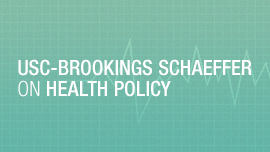Yesterday, we received the welcome news that new diabetes cases may finally have peaked in the U.S. Yet, the disease continues to burden the U.S. and other countries around the world. Globally, over 380 million people are estimated to have Type 2 diabetes, and nearly half are undiagnosed. One approach to changing this trend is to better align health care payments with prevention and chronic disease management. As we noted in five case studies, making feasible changes to the way health care is paid for can better support the needed workforce structures, care management systems, and care coordination tools to assist patients and their clinicians in managing diabetes and diabetes risk factors.
Diabetes as a Barometer
Like many chronic diseases, diabetes outcomes depend on health promotion and early prevention activities that target weight management, eating better and exercising. Effective screening of risk factors and better self-management can prevent the onset of Type 2 diabetes or other diseases, such as high blood pressure and heart risk factors, that may be associated with diabetes. Preventing diabetes and these co-morbidities can reduce premature death and direct health care costs. Yet investments in these early-stage services are relatively scant. Current volume-based payment models, such as fee-for-service (FFS), tend to pay less for preventive early interventions that keep people healthy. FFS payments reimburse services that are provided after patients get sick; while such care is critical for patients who need it, the payments are not well-aligned with increasing opportunities to head off costly complications. Since effective diabetes care requires a comprehensive set of health services throughout the care continuum—spanning prevention, early detection, management, and treatment—diabetes can be used as a barometer to track a health system’s performance in preventing and managing chronic diseases. The case studies show how aligning payments more closely with the goals of preventing diabetes and its complications lead to more comprehensive care and better population health outcomes, improving the barometer without adding to total health care spending
Five Innovators in Diabetes Care
In the table below, we describe five models from India, Mexico, Spain, and the United States using the Accountable Care Framework, which includes: population, performance measures, continuous improvement, payments and incentives, and care coordination and transformation.
Despite diverse cultural and economic differences, these innovations in diabetes care address many common issues, including: transitioning infrastructure and workforce resources to better support disease prevention; changing the way health care is paid for by rewarding early interventions to maintain health; sharing best practices in population health management; and balancing short-term successes with long-term investment. Many of these incremental changes can be adapted in the U.S. to improve accountable care organization (ACO) implementation. For a more in depth look, visit our April 2015 event on Disruptive Innovation in Diabetes Care from Around the World.
Click the image below to expand the table on mobile.
Payment and Measurement to Support a Better Future
While the case examples have seen notable improvements, the experiences also suggest that sustaining innovation by making fundamental changes in the way we pay for care is difficult. Recently, we studied challenges to the implementation of such health care payment and delivery innovations. We found that the way health systems are financed is one of three main barriers, which also include regulatory and institutional obstacles.
Alternative payment models for diabetes care are not new. Many health systems and countries are working to dramatically shift care provision by adopting capitated, person-level payments tied to quality outcomes. However, this immediate transition to pay based on the person’s characteristics may neither be achievable, nor appropriate, for all health systems. Instead, more incremental short-term steps can build support and practical experience for many of these innovative approaches. For example, some of the previously siloed, piecemeal payments for care can be incrementally replaced with a per-member-per-month (PMPM) payment alongside traditional FFS payments. Patients can also help cover some of the costs of these new care models through a subscription payment instead of FFS out-of-pocket payments—a “demand side” version of payment reform.
By transitioning payment more toward accountable models, providers can better invest in early interventions to prevent diabetes and provide routine support to control patients’ illnesses like diabetes. Better capabilities, data, and provider performance tracking are needed to ensure that these new models for payment successfully translate to care improvements. To this end, providers involved in the five case studies invested in:
- Team-based care model to ensure continuity of care and that all patients’ needs are met;
- Electronic health records to support continuous performance improvement efforts, foster team-based care, and to proactively identify high-risk patients; and
- Earlier outreach and more comprehensive follow-up for patients with or identified as at-risk for developing diabetes.
Conclusion
As these examples of diabetes care reform show, a focus on the patient throughout all stages of care can bring together diverse stakeholders in order to move delivery and payment for diabetes care forward. This type of framework helps to articulate the linkages between prevention, screening, diagnosis, and treatment among the providers, system administrators, public officials, and advocates. It is potentially applicable to many other chronic diseases, including heart disease, HIV, and viral hepatitis. Incremental payment changes can give providers the flexibility to invest in meaningful interventions that improve the quality of patient care and may yield total cost of care savings, particularly in already high-cost settings.
The Brookings Institution is committed to quality, independence, and impact.
We are supported by a diverse array of funders. In line with our values and policies, each Brookings publication represents the sole views of its author(s).





Commentary
Paying for better health and wellbeing in diabetes care
December 1, 2015